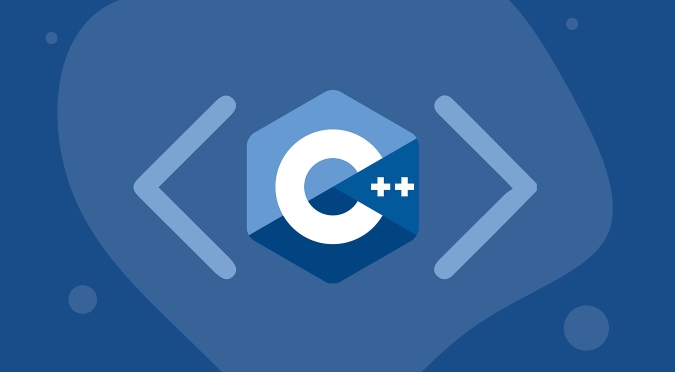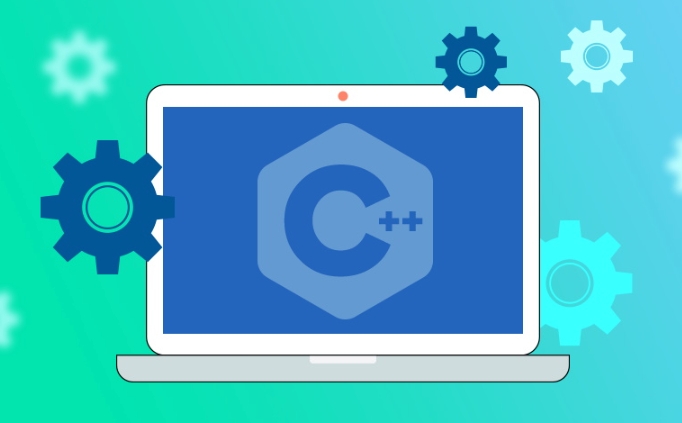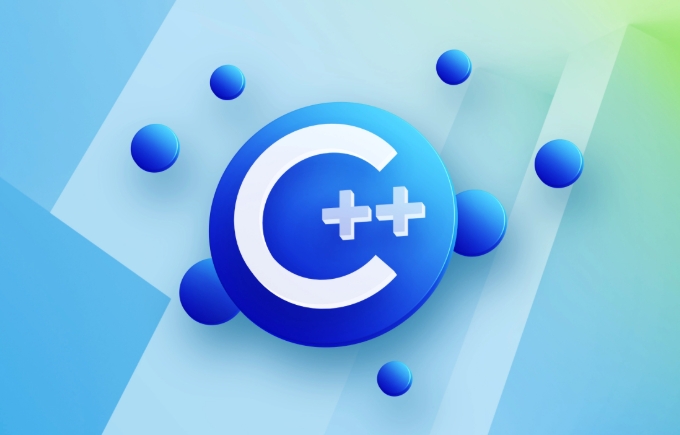std::chrono is used in C to process time, including obtaining the current time, measuring execution time, operation time point and duration, and formatting analysis time. 1. Use std::chrono::system_clock::now() to obtain the current time, which can be converted into a readable string, but the system clock may not be monotonous; 2. Use std::chrono::steady_clock to measure the execution time to ensure monotonicity, and convert it into milliseconds, seconds and other units through duration_cast; 3. Time point (time_point) and duration (duration) can operate interoperably, but pay attention to the differences in unit compatibility and clock epoch; 4. C 20 supports time formatting and parsing, and needs to use std::format and std::parse, relying on the compiler's support for C 20.

Using std::chrono in C can be really useful once you get the hang of it. It's part of the standard library and give you solid tools for handling time — whether that's measuring durations, working with timestamps, or dealing with time zones in C 20 and beyond.

Getting the current time
To grab the current point in time, you usually go with std::chrono::system_clock::now() . That gives you a time_point representing right now.
auto now = std::chrono::system_clock::now();
This is often used when you want to measure how long something takes or just log a timestamp. If you need to convert it to something readable like a string, you'll typically convert it to time_t and use ctime or similar:

std::time_t now_c = std::chrono::system_clock::to_time_t(now); std::cout << "Current time: " << std::ctime(&now_c);
Keep in mind that system_clock might not be monotonic — if someone changes the system time, it could jump forward or backward. For timing purposes, read on.
Measuring execution time accurately
When you want to measure how long a piece of code runs, steady_clock is your friend. It's monotonic (won't go backwards), which makes it safe for timing.

Here's a common pattern:
auto start = std::chrono::steady_clock::now(); // ... do some work ... auto end = std::chrono::steady_clock::now(); auto duration = end - start;
If you want to show this in millionseconds or seconds, you'll cast it using duration_cast :
auto ms = std::chrono::duration_cast<std::chrono::milliseconds>(duration).count(); std::cout << "Took " << ms << " ms\n";
You can also use microseconds , nanoseconds , or even seconds . Just keep in mind that converting from higher precision (like nanoseconds) to lower (like seconds) will truncate unless you cast properly.
Working with time points and durations
- A time_point is a specific moment.
- A duration is a span of time (like 5 seconds).
They're separate types, but they work together. You can add a duration to a time_point to get a new time_point:
auto then = now std::chrono::hours(2);
This is handy when scheduling events or waiting until a certain time. Just make sure both sides of the operation are using compatible units — mixing hours and million seconds won't cause errors, but it might not do what you expect unless you explicitly convert.
Also, don't assume that all clocks start at zero — their epoch (starting point) varies:
-
system_clocktypically starts in 1970 (like Unix time). -
steady_clockhas an arbitrary epoch, so comparing its time_points across runs doesn't make sense.
Formatting and parsing time (C 20 )
With C 20, <chrono> got better support for formatting dates and times directly:
auto now = std::chrono::system_clock::now();
std::cout << "Formatted: " << std::format("{:%Y-%m-%d %H:%M}", now) << "\n";Parsing time strings also became possible:
std::istringstream ss("2024-03-15 12:30");
std::chrono::system_clock::time_point tp;
ss >> std::parse("%Y-%m-%d %H:%M", tp);This is super helpful when reading logs or config files with timestamps. But remember, these features require C 20 and good compiler support (like GCC 13 , Clang 15 , or MSVC with latest STL).
So yeah, std::chrono is pretty powerful once you understand the basic types and when to use each clock. Not too hard, just a bit easy to mix up at first.
The above is the detailed content of Using std::chrono in C. For more information, please follow other related articles on the PHP Chinese website!

Hot AI Tools

Undress AI Tool
Undress images for free

Undresser.AI Undress
AI-powered app for creating realistic nude photos

AI Clothes Remover
Online AI tool for removing clothes from photos.

Clothoff.io
AI clothes remover

Video Face Swap
Swap faces in any video effortlessly with our completely free AI face swap tool!

Hot Article

Hot Tools

Notepad++7.3.1
Easy-to-use and free code editor

SublimeText3 Chinese version
Chinese version, very easy to use

Zend Studio 13.0.1
Powerful PHP integrated development environment

Dreamweaver CS6
Visual web development tools

SublimeText3 Mac version
God-level code editing software (SublimeText3)

Hot Topics
 Object-Relational Mapping (ORM) Performance Tuning in PHP
Jul 29, 2025 am 05:00 AM
Object-Relational Mapping (ORM) Performance Tuning in PHP
Jul 29, 2025 am 05:00 AM
Avoid N 1 query problems, reduce the number of database queries by loading associated data in advance; 2. Select only the required fields to avoid loading complete entities to save memory and bandwidth; 3. Use cache strategies reasonably, such as Doctrine's secondary cache or Redis cache high-frequency query results; 4. Optimize the entity life cycle and call clear() regularly to free up memory to prevent memory overflow; 5. Ensure that the database index exists and analyze the generated SQL statements to avoid inefficient queries; 6. Disable automatic change tracking in scenarios where changes are not required, and use arrays or lightweight modes to improve performance. Correct use of ORM requires combining SQL monitoring, caching, batch processing and appropriate optimization to ensure application performance while maintaining development efficiency.
 The Serverless Revolution: Deploying Scalable PHP Applications with Bref
Jul 28, 2025 am 04:39 AM
The Serverless Revolution: Deploying Scalable PHP Applications with Bref
Jul 28, 2025 am 04:39 AM
Bref enables PHP developers to build scalable, cost-effective applications without managing servers. 1.Bref brings PHP to AWSLambda by providing an optimized PHP runtime layer, supports PHP8.3 and other versions, and seamlessly integrates with frameworks such as Laravel and Symfony; 2. The deployment steps include: installing Bref using Composer, configuring serverless.yml to define functions and events, such as HTTP endpoints and Artisan commands; 3. Execute serverlessdeploy command to complete the deployment, automatically configure APIGateway and generate access URLs; 4. For Lambda restrictions, Bref provides solutions.
 A Deep Dive into PHP's Internal Garbage Collection Mechanism
Jul 28, 2025 am 04:44 AM
A Deep Dive into PHP's Internal Garbage Collection Mechanism
Jul 28, 2025 am 04:44 AM
PHP's garbage collection mechanism is based on reference counting, but circular references need to be processed by a periodic circular garbage collector; 1. Reference count releases memory immediately when there is no reference to the variable; 2. Reference reference causes memory to be unable to be automatically released, and it depends on GC to detect and clean it; 3. GC is triggered when the "possible root" zval reaches the threshold or manually calls gc_collect_cycles(); 4. Long-term running PHP applications should monitor gc_status() and call gc_collect_cycles() in time to avoid memory leakage; 5. Best practices include avoiding circular references, using gc_disable() to optimize performance key areas, and dereference objects through the ORM's clear() method.
 Building Immutable Objects in PHP with Readonly Properties
Jul 30, 2025 am 05:40 AM
Building Immutable Objects in PHP with Readonly Properties
Jul 30, 2025 am 05:40 AM
ReadonlypropertiesinPHP8.2canonlybeassignedonceintheconstructororatdeclarationandcannotbemodifiedafterward,enforcingimmutabilityatthelanguagelevel.2.Toachievedeepimmutability,wrapmutabletypeslikearraysinArrayObjectorusecustomimmutablecollectionssucha
 Laravel raw SQL query example
Jul 29, 2025 am 02:59 AM
Laravel raw SQL query example
Jul 29, 2025 am 02:59 AM
Laravel supports the use of native SQL queries, but parameter binding should be preferred to ensure safety; 1. Use DB::select() to execute SELECT queries with parameter binding to prevent SQL injection; 2. Use DB::update() to perform UPDATE operations and return the number of rows affected; 3. Use DB::insert() to insert data; 4. Use DB::delete() to delete data; 5. Use DB::statement() to execute SQL statements without result sets such as CREATE, ALTER, etc.; 6. It is recommended to use whereRaw, selectRaw and other methods in QueryBuilder to combine native expressions to improve security
 Reactive Programming in Java with Project Reactor and Spring WebFlux
Jul 29, 2025 am 12:04 AM
Reactive Programming in Java with Project Reactor and Spring WebFlux
Jul 29, 2025 am 12:04 AM
Responsive programming implements high concurrency, low latency non-blocking services in Java through ProjectReactor and SpringWebFlux. 1. ProjectReactor provides two core types: Mono and Flux, supports declarative processing of asynchronous data flows, and converts, filters and other operations through operator chains; 2. SpringWebFlux is built on Reactor, supports two programming models: annotation and functional. It runs on non-blocking servers such as Netty, and can efficiently handle a large number of concurrent connections; 3. Using WebFlux Reactor can improve the concurrency capability and resource utilization in I/O-intensive scenarios, and naturally supports SSE and WebSo.
 go by example generics
Jul 29, 2025 am 04:10 AM
go by example generics
Jul 29, 2025 am 04:10 AM
Go generics are supported since 1.18 and are used to write generic code for type-safe. 1. The generic function PrintSlice[Tany](s[]T) can print slices of any type, such as []int or []string. 2. Through type constraint Number limits T to numeric types such as int and float, Sum[TNumber](slice[]T)T safe summation is realized. 3. The generic structure typeBox[Tany]struct{ValueT} can encapsulate any type value and be used with the NewBox[Tany](vT)*Box[T] constructor. 4. Add Set(vT) and Get()T methods to Box[T] without
 css table-layout fixed example
Jul 29, 2025 am 04:28 AM
css table-layout fixed example
Jul 29, 2025 am 04:28 AM
table-layout:fixed will force the table column width to be determined by the cell width of the first row to avoid the content affecting the layout. 1. Set table-layout:fixed and specify the table width; 2. Set the specific column width ratio for the first row th/td; 3. Use white-space:nowrap, overflow:hidden and text-overflow:ellipsis to control text overflow; 4. Applicable to background management, data reports and other scenarios that require stable layout and high-performance rendering, which can effectively prevent layout jitter and improve rendering efficiency.






